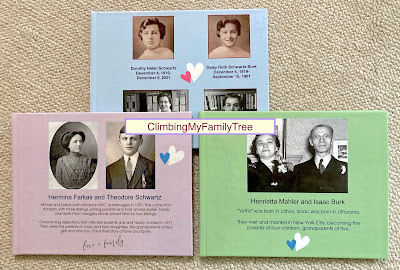The true-crime book
Genealogy of a Murder by
Lisa Belkin is meticulously researched, somewhat sprawling yet quite absorbing because of her focus on the family history backstories that shaped the character and actions of three men in the lead-up to the tragic shooting of a policeman in 1960.
The police officer who died was David Troy, the shooter was Joseph DeSalvo, and the person who first mentioned the crime to the author was her stepfather, Dr. Alvin Tarlov, a man haunted by the role he inadvertently played in this crime.
Exploring how family history affects our lives, the author writes in her introduction: "We shape history even as we are shaped by it. We owe thanks (and blame) to our ancestors, and an explanation (and an apology) to our descendants. We are actors without a script, travelers without a map, gamblers who don't know the odds." No wonder I was attracted to this book!
Lots of family history
I admire the way Lisa puts each man's family history into the social, economic, historical, and religious context of the time and place, revealing the hidden influences on what these men thought, felt, and did. She labels each chapter to make it easier to know who we're following, where they are, and the date (or period). Readers come to understand how the hopes, ambitions, fears, and concerns of grandparents, parents, siblings, spouses, bosses, and coworkers swayed the decisions and actions of these men--leading to an unanticipated but deadly result.
As readers, we get an accessible deep-dive into history as these people lived it and as they shaped it. I was surprised to meet the notorious murderers Leopold and Loeb, follow along as experimenters searched for malaria cures, find out about the early days of motorcycle racing, and see different aspects of prison life, all key elements of the main story. So much detail but, in the end, important for us to get a sense of why this murder was committed.
Consult the family trees, then read about the crime
Because Genealogy of a Murder is a lengthy book, and because of the genealogy angle, I recommend first reading and bookmarking pages xx and xxi, where four family trees are shown. Next, I recommend reading pages 3-8 for an overview.
Then I suggest skipping ahead to July 4, 1960 (starting on p. 280) to learn about the actual crime. I think it's helpful to know what happened before returning to the early part of the book and reading Lisa's chronological narrative starting with the 1900s (p. 11).
For myself, once I understood the crime, I was more patient in following the genealogy background, which Lisa carefully assembled from a myriad of sources, including contemporary news accounts, historical resources and documents, and interviews with descendants.
Last suggestion: if you have time, read the chatty notes starting on p. 369. The author tells us what genealogical details she couldn't find, where she looked, and where she did learn valuable details. I smiled when I saw Lisa giving credit to, among other experts, genealogist Melanie McComb of the NEHGS!





































